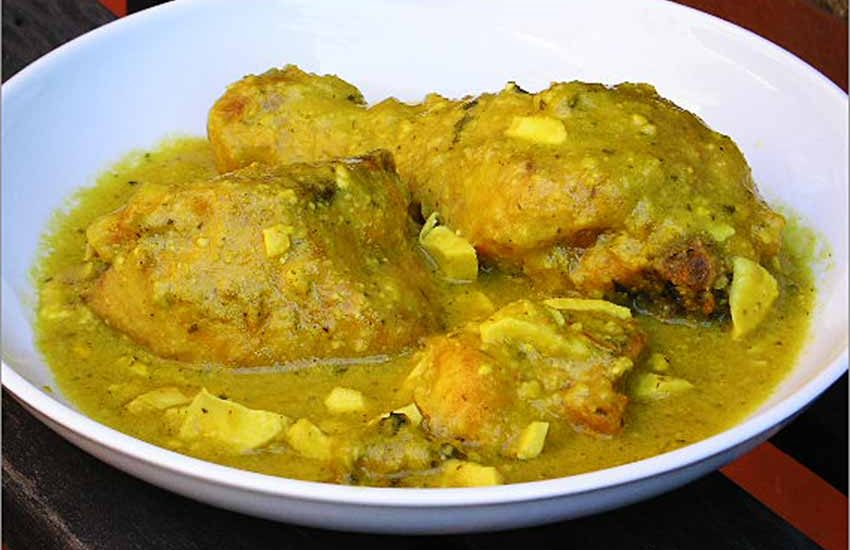Discover this succulent chicken Pepitoria recipe, cooked in a flavoursome almond, egg yolk and a delicious saffron sauce. A recipe that has survived hundreds of years and is still enjoyed today.
The Pepitoria is a poultry-based recipe that has been a popular part of Spanish gastronomy several centuries now. Some claim that its origin is French-based on some French recipe books referring to the ‘petit-oie’, which means ‘little-goose’, a bird that was traditionally cooked by the French in almost an identical manner to the way the Pepitoria recipe is prepared nowadays. Others though are convinced that it was the Moors who introduced the recipe to the Spanish Peninsula, which would also make sense if we look closely at the ingredients and the way they are cooked, typical of many traditional Moorish recipes.
Whichever is right, it can not be denied that the Pepitoria recipe has been around the Spanish peninsula long enough to be considered a traditional Spanish recipe in its very own right.
Back in the time, chicken wouldn’t be as broadly available to the masses as it is today. And when it was, it would be affordable to the more affluent classes only. This means that originally the Pepitoria would have been prepared with cheaper and more easily available cuts of meat, such as poultry offals or hen. The Pepitoria method of cooking meat is not restricted to hen or chicken. It is also delicious with rabbit, partridge or turkey to mention just a few. Here are the ingredients for 4 servings:

Ingredients:
1.6 kg Chicken – approx. 1 whole chicken, cut into pieces
2 Brown onion – finely chopped
1 Carrot – finely chopped
2 Egg – boiled
2 cloves Garlic – peel and crushed
2 slices Bread – toasted
1 pinch Saffron – toasted
15 Almonds – toasted
250 ml White wine
250 ml Chicken stock
100 ml Extra virgin olive oil
1 Bay leaf
Salt to taste
Freshly ground black pepper - to taste
1 sprinkle of freshly chopped parsley
So, here are the steps you need to take...
1.Cut your chicken into medium-sized pieces. Remove the skin –except for the wings– to avoid excess fat when cooking the chicken. Season and put to one side
2. Brown the chicken in a very hot heavy-bottomed saucepan with a little olive oil until golden-brown all over. Remove from the heat and put to one side.
3. Chop the onions and the carrot. Crush and peel the garlic cloves. Place in the same pan we used for the chicken and cook for 10-15 minutes until soft and transparent, deglazing the pan as you do so.
4. In the meantime, boil the eggs and put the egg yolks to one side. Toast the almonds slightly using a small pan, then the saffron and finally the bread.
With the help of a pestle and mortar, make a paste using the egg yolks, the almonds, the bread and the saffron. This is called typically called a ‘majado’ in Spain
5. Mix in the chicken and the ‘majado’ in the pan with the vegetables. Add the glass of white wine (dry) and cook until the alcohol has evaporated, 3-4 minutes. Then add the chicken stock, the bay leaf and cook on medium heat for approx. 35-40 minutes or until the chicken is soft and tender.
6. Serve immediately, topped with a mixture of chopped egg white and fresh parsley.
You can pair it with french fries or with some plain steamed rice or just get dunking with a good slice of crunchy bread!
Enjoy!